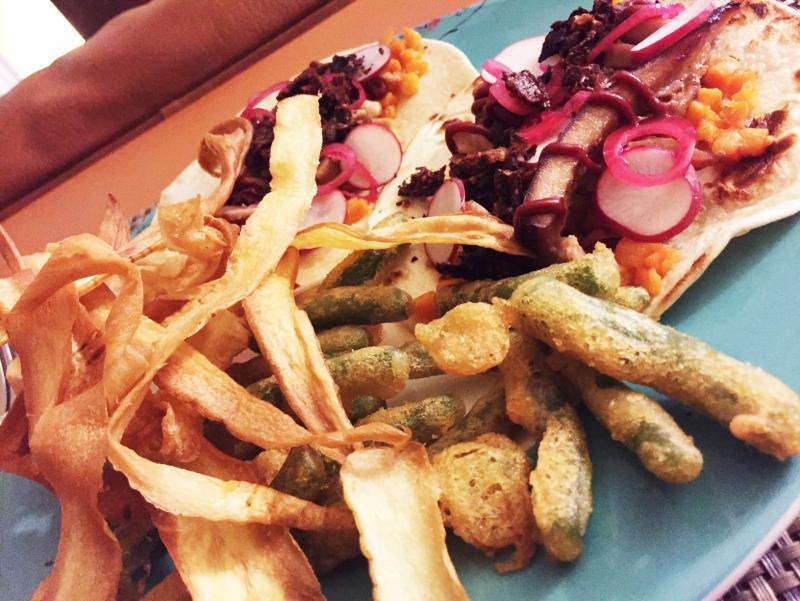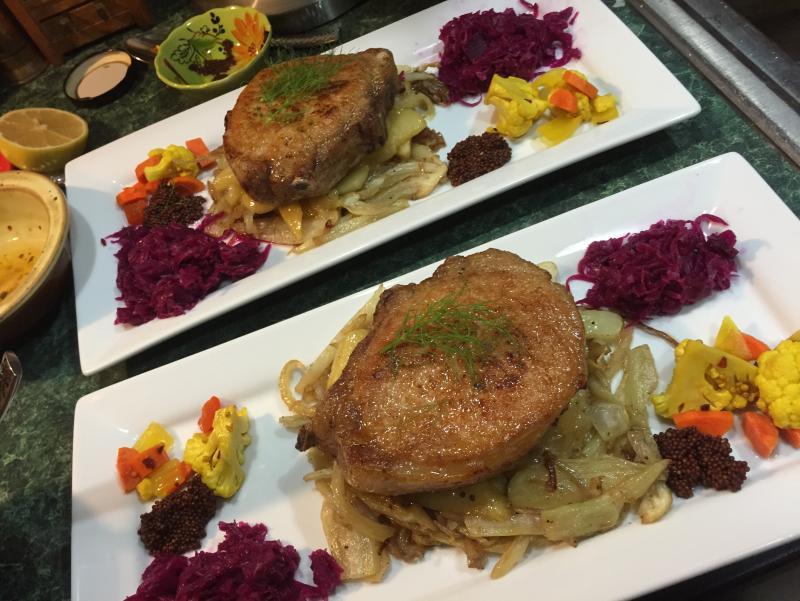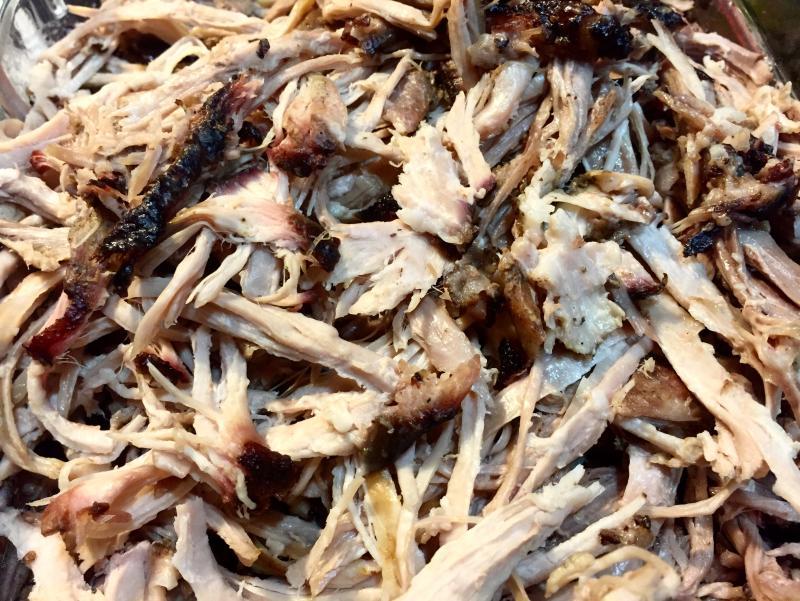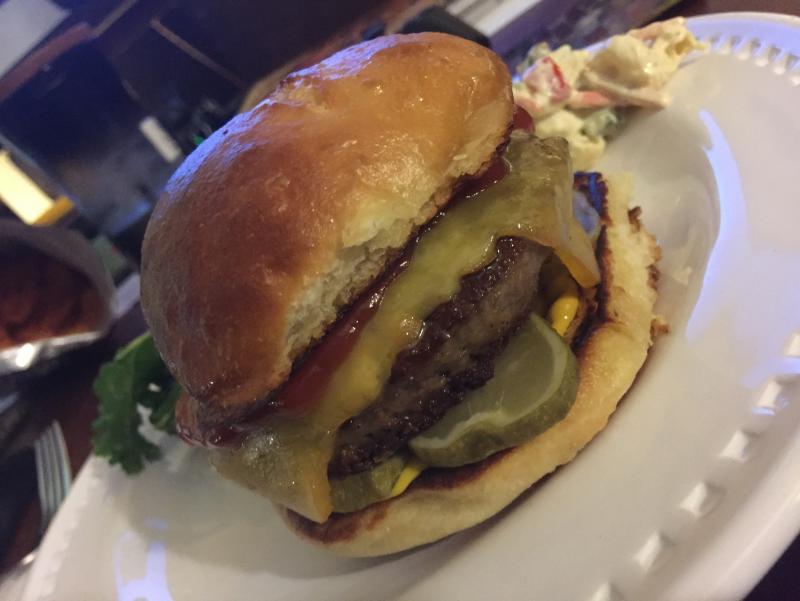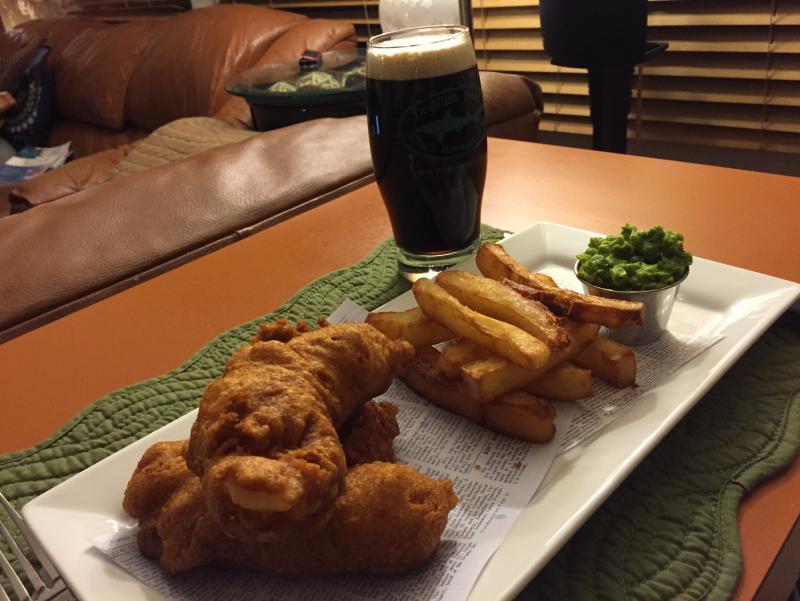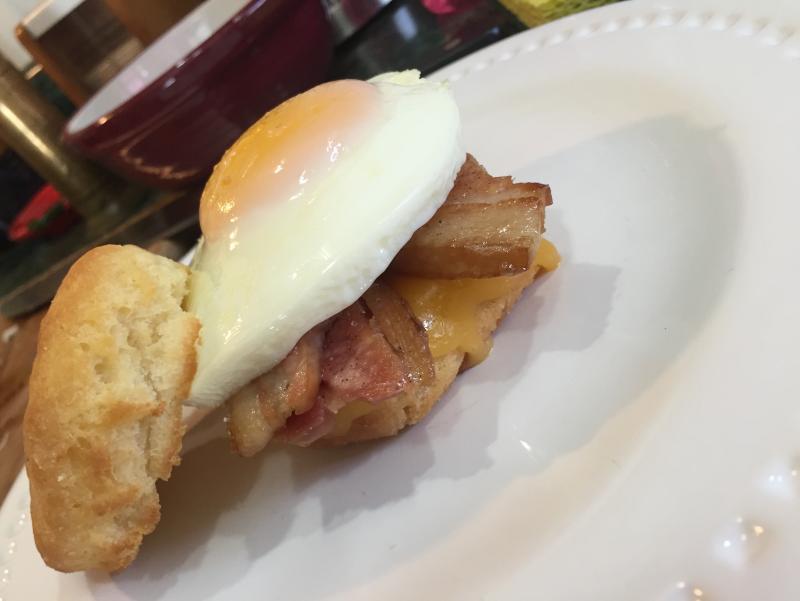-
Posts
1,807 -
Joined
-
Last visited
Content Type
Profiles
Forums
Store
Help Articles
Everything posted by btbyrd
-
Zingerman's is having their annual Balsamic Blowout. I'm planning on getting a couple bottles of the 10 and 16 year, and a bottle of the 30 year for special occasions. And if you've ever wanted a bottle of 100 year old vinegar, you can pick up 100ml for $250.
-
The plan was to make Hoppin' John, but apparently my Anson Mills order won't arrive until the 4th. Sadface.
-
The point is that skirt steak is so thin that it's basically all "edge." By the time you sear it properly, you've basically cooked it already. SV doesn't offer much of an advantage there... unless you bind together several layers of skirt steak with Activa so that it resembles a thicker cut (which I've also done with great success). But that's not usually how you cook something like skirt steak. For standard preparations, grilling it over a really hot fire is ideal.
-
Yep. Wifi and Bluetooth.
-
I basically never used my torch before I got the Searzall (except for lighting the smoker and the fire pit). I still don't use it to sear SV proteins very often -- I prefer using a grill or deep frying -- but that functionality is nice to have for times that it's too cold or rainy to grill and and I don't feel like going through the hassle of frying. My main usage is melting cheese, and the Searzall is a total boss at that task. I also use it to cook out the whites on sunny-side-up eggs if they're looking runny when the yolk is close to done. It also functions as a nice security measure when I travel to friends' houses to cook and they have a crappy/uneven grill or oven that I can't trust to evenly sear everything. The ability to touch up the sear on proteins that didn't quite brown evenly is extremely helpful in such situations. While I don't use the Searzall as much as I thought I would, it allows me to actually use my torch in the kitchen, where it previously sat unused. If you're going to have a TS8000, you should go ahead and pick up a Searzall while you're at it. Naked torches aren't good for much; the Searzall, on the other hand, allows for a lot more capabilities and control.
-
We didn't visit family this year, so it was Thanksgiving for two. We decided to have some fun with it and have traditional ingredients in unfamiliar preparations. Thanksgiving taco: smoked confit turkey thigh -sweet potato hash - cranberry BBQ sauce - cranberry pickled shallots - radish - spicy turkey cracklins. Served it with some parsnip chips and tempura green beans. And a cocktail: Gin + Cranberry "Consomme" + Bourbon Barrel Aged Maple Syrup + Club Soda. All was good. That cranberry consomme recipe is awesome. The yield is pretty low, but the juice is powerful. You can find lots of uses for it around this time of year. I bet the technique would work great with cherries as well.
- 21 replies
-
- 14
-

-
A deep fry pre-sear and a deep fry post-sear is pretty much the only way I cook tender cuts sous vide. Peanut oil, lard, or tallow until just about smoking (400F or so). Give it 40 seconds in the oil before you bag and another 40-60 seconds on the pickup to finish. You can go a bit longer if you want a bit more texture. The crust you can develop with the fry is better and faster than most other methods. It's also really nice to finish 72 hour short ribs this way too. With frites. But I digress...
-
I just discovered Gastropod, which focuses more on the science and history of food than cooking per se, and it's excellent. Highly recommended. You can also check out the archives over at the Heritage Radio Network, which hosts Cooking Issues (another of my favorites). There are a ton of different programs/shows to browse through. "A Taste of the Past" is one of my favorites.
-
Silicone is prone to picking up odors and hanging onto them. When I first got my Silpats, I made some crispy duck skin and they smelled like duck fat for months no matter what I did to them. Now they smell perpetually of bacon. Likewise, the gasket on my (non-IP) pressure cooker has a perpetual beef/chicken stock smell that never goes away regardless of how many times I run it through the dishwasher (which is every time I use it). If you Google "pressure cooker gasket odor," you'll find this is a common issue. There aren't any solutions that completely deodorize silicone, but it's not really much of a problem for pressure cooker gaskets. Once I made my peace with the issue, I didn't really mind it anymore.
-
Water + steamer basket sounds like the way to go.
-
It would be nice if there was a de-bundled version available and you could just buy the torch head. 16 oz propane tanks are cheap (they're like $3.50 near me) and a cooling rack set over a sheet tray works just as well as a uni-tasker searing rack. Given that most people buying a torch for SV purposes will already have a cooling rack and a sheet tray, the $160 price point for the bundle seems awfully high. I also don't think that the relevant contrast is between the Sansaire torch head and the Searzall, but between the Sansaire and a TS8000. The reason the Sansaire is so much faster when searing is that it's using direct heat rather than the radiant/infrared heat kicked out by the Searzall. The latter will always be slower, but it's also what allows you to use the Searzall as a handhead broiler rather than a torch. The broiler applications are what the Searzall is really all about. If you want to go faster, you can just remove the Searzall and blast away with the TS8000. There are a lot of people who use the Bernzomatic torch heads to finish sous vide meats and don't complain about torch taste. The Sansaire looks like it has a superior flame for searing purposes (given its size) but the question is whether that improvement (and the additional searing tray) is worth the $100+ premium over a TS8000.
-
The fries were some of the best I've had (as usual) but my wife described the fish as the showstopper. It was really good. I used AP flour instead of lower-gluten cake flour because I already have 4 kinds of flour on hand and didn't want to buy another bag for a single recipe. I suspect that the crust would be lighter and lacier if I used cake flour instead. I also want to try Heston's method of aerating the batter in a whipping siphon. But the core of the ChefStep's technique -- a quick brine and a dip in Methocel F50 before breading -- works really well and kept the fish crispy for quite a while.
-
My local upscale grocer started carrying Compart Duroc's dry aged pork chops recently, so I thought I'd try to make it the centerpiece of a dish. For pork, they were very expensive -- something like $17/lb if memory serves. So that's pricey, but on a par with quality beef steak that's not of super-premium origin. But having eaten it, I can't say that it's really worth the extra money. It was definitely a bit more tender and porkier than unaged chops (I've had Compart's normal chops several times) but if I hadn't known already, I wouldn't have suspected that they were anything special. Beef that's been dry aged for a long time can take on some nice blue cheese type notes and is distinctly more savory. These chops, while delicious and "more porky" than the non-aged variety, didn't take on any novel flavors. Which might be a good thing. The fat didn't taste rancid or off at all (it was great) but it was, all things considered, just a good pork chop. I wouldn't buy them again at that price point. That said, I'd be very interested to try dry aged pork from a fattier heritage breed (preferably raised on pasture).
-
Some recent dinners... Dry aged pork chop; fennel and apple; beet kraut; pickled cauliflower; pickled mustard seed Bbq Bacon Cheddar Burger (sous vide then hard pan sear) on grilled brioche bun ChefSteps' Fish and Chips with Mushy Peas.
- 494 replies
-
- 11
-

-
-
The ChefSteps black bean burger looks pretty rad. They have a mushroom variation up on their website too.
-
Roll your own. You can get won ton wrappers at pretty much every grocery store I've been to. If time's a factor, just make a big batch of 50-100 and freeze them.
-
Italian ramen. Parmesan dashi, smoked pork belly, lardo Iberico de bellbota, peas and carrots, 62C egg yolk.
- 494 replies
-
- 12
-

-
I came up with this idea for a harvest soup last Thanksgiving that I'm pretty proud of. Take some butternut squash, coat lightly in clarified butter, and roast until it's soft and just starting to brown. Then add it to a blender with a goodly amount of carotene butter (ChefSteps has a good recipe that doesn't require a centrifuge). Season with salt, pepper, and a touch of nutmeg. Adjust consistency with turkey/vegetable/chicken stock if necessary. Reserve. Take a bottle of hard cider (I like Samuel Smith's organic cider for this purpose) and bring it to a boil. Add 1% by weight of agar and whisk until hydrated. Transfer to a rectangular container and chill until set. Cut the cider into small cubes. Make or buy some pumpkin seed brittle and crush it lightly. To serve, arrange the cider jelly cubes in the bottom of the bowl and pour over the warm soup. If you want, you can swirl in some spirals of heavy cream or herb oil on top. Garnish with pumpkin brittle. Serve with grilled crostini smeared with copious amounts of carotene butter and Maldon salt. The agar cider jelly is a delicious, hidden surprise (and won't melt under the heat of the soup) and the brittle adds a nice crunch and a pop of sweetness. If you wanted to be super pretentious and do a fine dining style presentation, you could arrange a bowl with the cider cubes, the brittle, some creme fraiche, and some puffed oats or barley and then pour the soup over the top tableside. And maybe some spherified lemon juice or some other nonsense. I had to serve it in my parent's tableware, so it's not exactly how I'd serve it at home. Anyway...
-
Instead of steaming/blanching/freezing, has anyone tried popping a head of cabbage into a pressure cooker for five minutes or so?
-
Kenji's Chicken Chili Verde is my favorite use for tomatillos as of late. They obviously make a fine, fresh, tangy salsa as well.
-
I was sure this thread would be about the Kwanzaa cake.
-
There's no advantage of this model over cheaper circulators. Wattage and power doesn't really matter except in terms of how long it takes for the water to come up to temperature (and also recovery time). But these aren't reasons to pay double the price of its competitors. It's also worth noting that other circulators have a higher capacity (20+ liters) and you can use whatever container you'd like. The model you're considering is fixed at 15L and it'll be sitting on your countertop taking up space whether you're using it or not. 95% of what you'd want to do with an immersion circulator can be achieved without a vacuum machine. But if you're going to have a circulator, you'll probably end up buying an inexpensive edge-style vacuum sealer at some point. The main advantage of vacuum sealers is that you can cook, chill, and then store food cooked low temperature. They're also nicer for extended cook times like a 72 hour cook because the bags and seals are more robust than on normal Ziplock bags. But they're not really necessary. You can do longer cooks in Ziplocks and be fine.
-
Activa GS is primarily formulated to be used as a slurry (so much so that Modernist Pantry and ChefSteps say that it is only used this way) though Ajinomoto says you can also add it to mixed or tumbled foods as a powder. If you're joining larger cuts to do some basic restructuring, GS should be used as a slurry. It doesn't work nearly as well as Activa RM does when dusted on the surface of a protein.
-
Potatoes (and vegetables in general) don't really start to cook until they exceed 85C, which is a lot higher than you want to cook most proteins (especially fish). I suspect that the potatoes were sliced thin, blanched in boiling salted water until mostly cooked through but still somewhat firm, and then chilled before being applied to the fish. Or maybe they were even applied while hot/warm to give them a head start. But sticking raw veg/starch to fish and hoping to brown it up without overcooking things is wishful thinking. I know that at Eleven Madison Park they do a zucchini-scaled fish dish that's cooked sous vide; the zucchini is blanched before cooking. Obviously a different technique, but I think a pre-blanch is a good idea.



